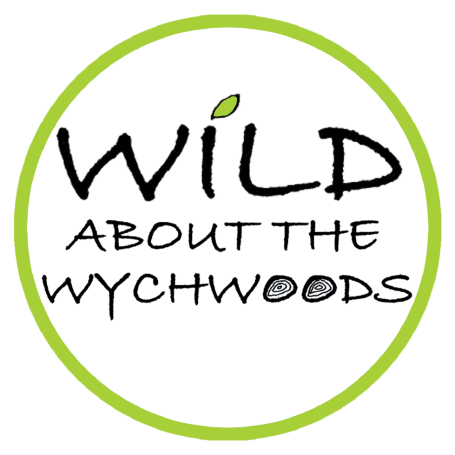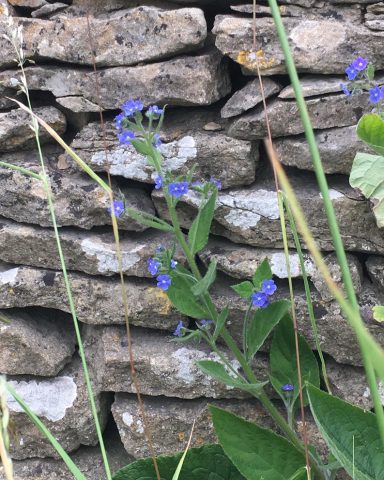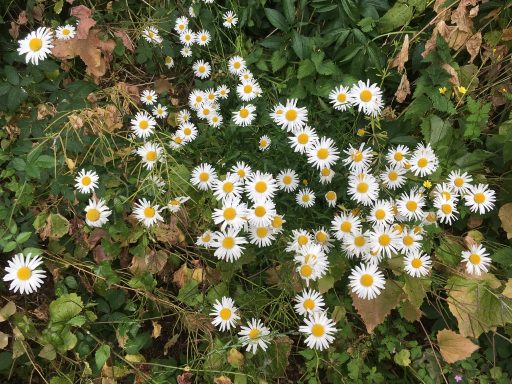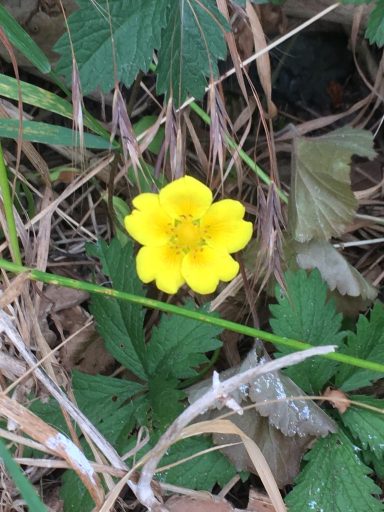GO WILD IN THE GARDEN
What?
We want everyone to manage an area of their garden, big or small, for wildlife by either planting wildflowers or leaving an unmown patch - you might be surprised by what comes up!
Why not extend this to the verge outside your home if you have one? Shipton under Wychwood Parish Council is actively encouraging this but please check with your local PC to see what their policy is.
Rewilding doesn't need to look a mess - it can be a beautiful way to protect and connect with nature.

Why?
Britain is one of the most nature-depleted countries in the world:
- We’ve lost approximately 97% of our species rich meadows since the 1930’s and with them, the vital foods needed by pollinators.
- One third of our bumblebees are now under threat of extinction.
- 70% of butterfly species have seen a decline since the 1970’s.
Planting native wildflowers will provide food for pollinators like bees and butterflies, as well as other insects. It will also provide food and cover for birds and small mammals. And on top of that, it will look far more interesting and colourful than a boring monoculture of grass - lawns are so last year!
How?
- Sow some wildflower seeds in an area of your garden or in the verge outside your house.
- Follow No May May and leave at least a part of your grass unmown. Better still, extend it to June and July rather than just chopping down what you've allowed to flourish. Many seeds can lie dormant for years so you never know what will come up.
- Mown paths through an area of longer grass can look fab. Less mowing to do too!
- Leave a corner of your garden to grow wild to encourage insect life (essential for swifts and hedgehogs) and provide food and shelter for wildlife.
- We often give out wildflower seeds at our talks or you can get a good selection at Groves in Milton.
Where and when?
The bigger the better but even a small patch of your garden can make a huge difference to nature.
You can also adopt a suitable verge outside your house but do make sure it won’t affect visibility on junctions or block pavements when the plants grow.
Wildflower seeds are best planted either in autumn or spring. They prefer non-fertile ground so there's no need to fertilise, however you will need to clear the ground of grass as this competes with the flowers. Yellow rattle also helps keep grass at bay.

Top Ten Takeaways for a Wildlife Friendly Garden
Here are our top ten tips following our talk, Wildlife Friendly Gardening by Rhiannon Young in February 2025:
1. Provide drinking water - water bowls and birdbaths are essential for birds as well as small mammals such as hedgehogs, and even bees and other insects.
2. Create a pond - if you have the space this is absolutely the best thing you can do for wildlife in your garden. Big or small (even an old sink or plastic container will do), ponds support an amazing amount of aquatic life as well as attracting newts, frogs and dragon/damselflies - if you build it they will come! With a bit of planting you can make this an attractive and fascinating feature in the garden. Don’t forget to put in some stones or a ramp to allow hedgehogs to climb out if they fall in!
3. Plant for pollinators - sow wildflower seeds and plant a wide variety of nectar rich flowering plants to provide food for bees, butterflies and other insects.
4. Try No Mow May! It doesn’t have to look untidy - a mown path through longer grass can look amazing! Flowering lawns are havens for wildlife and fantastic for pollinators so stop using those nasty herbicides and pesticides. Short grass lawns are the equivalent of a desert for wildlife but longer grass encourages insects which is just what's needed for hedgehogs, birds and amphibians. Think of the effort saved and once you’ve tried it you may be tempted to leave it for June and July too!
5. Make a log pile - this will provide food for stag beetles, nesting sites for solitary bees and shelter for hedgehogs.
6. Plant a hedge - hedges provide both food and shelter for an amazing array of wildlife. Try native hedges with flowers for insects and berries for birds and small mammals.
7. Leave a wild patch - create a haven for wildlife in a corner of the garden by letting the grass grow, seeing what wildflowers come up, and leaving logs and leaves for shelter.
8. Feed the birds - birds need natural food sources like insects which we’ve covered above, but you can also put out supplementary food in bird-feeders, particularly in the colder months. Just make sure to clean your bird feeders regularly to avoid spreading diseases and check that your birdseed is from a reputable source.
9. Get connected - make a hedgehog hole in your fence or wall and help us make a Wychwoods Hedgehog Superhighway. Hedgehogs need to travel up to 2km a night to feed so let’s connect our back gardens - get all your neighbours involved too! This is the most important thing we can do to bring hedgehogs back from the brink of extinction. Once you’ve got your garden connected, put out a bowl of supplementary food. This can be hedgehog food or cat/kitten food (wet or biscuits, but not fishy). Don't forget the water and remember to wash the bowls regularly.
10. Install a water butt - rainwater is so much better for the garden that tap water - and it’s free! With Thames Water increasing our water bills it makes perfect sense.
Even if you start with just one or two things it will make a difference, but we hope you’ll take on more! We're aiming for a Wychwoods Open Gardens Day specifically for Wildlife Friendly Gardens in a year or two - so start getting your garden ready now!
Wildflower verges
We found 48 different wildflowers in the verges in Shipton this summer after leaving some areas unmown.
Here's just a small selection.
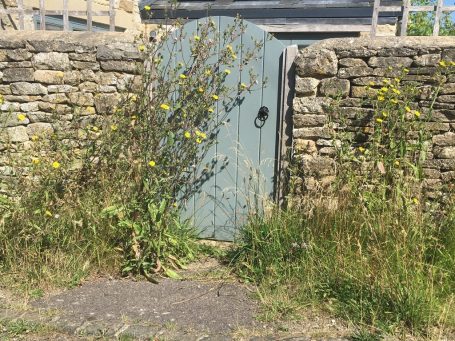

It's easy to sow seeds!
Clear the patch of all grass and weeds by hand (no Round-Up/glyphosate please!) and get a fine tilth in the soil. Press it down a bit. Mix the seeds with little sharp sand or dry earth to make distributing the very tiny seeds easier. Tread them in lightly but careful not to smother them in soil. If it’s very dry you can water them. Then wait and let nature do the rest. Hopefully you’ll have lovely summer display but be patient as some plants may take a year or more to appear!
After flowering and when the seeds have fallen (Sept/Oct) cut the plants back and remove the cuttings. This is important to stop the soil becoming more fertile.
Wildflowers prefer poor soils so there's no fertilising necessary. Yellow rattle is a good plant to add as it suppresses competing grasses to allow the wildflowers to grow
We need your consent to load the translations
We use a third-party service to translate the website content that may collect data about your activity. Please review the details in the privacy policy and accept the service to view the translations.
